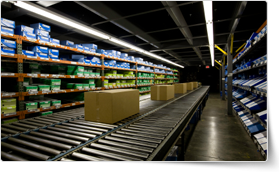
The ultimate goal of an LSS project is to improve the quality of the final product while minimising costs.
If you want to gain Green Belt in LSS, consider participating in Lean Six Sigma Green Belt Certification Training by pdtraining in Sydney, Canberra, Perth and other cities in Australia.
Process improvement is carried out under Lean Six Sigma to improve process efficiency. When a process begins to function at its optimum level, the quality of the end product is also enhanced. The goal of both Lean and Six Sigma is customer satisfaction at minimum cost. Whatever activity or resources do not add value to customers is considered waste and eliminated. By identifying and removing errors, defects and waste, Lean Six Sigma achieves quality improvement, thereby ensuring customer satisfaction.
The Five Phases of Process Improvement
Each phase of process improvement includes specific steps to identify defects, eliminate them and control the results. The five steps that Lean Six Sigma uses under DMAIC to achieve process improvement are:
- Define
- Measure
- Analyse
- Improve
- Control
Each of these five steps involves the use of specific tools for recording and analysing data, identifying limitations, and implementing improvement. The advantage of using LSS for process improvement is that it sustains the optimisation achieved to provide long-term results.
Tools Used for Process Improvement
Lean Six Sigma uses various methods of data collection, analysis and application for improving the efficiency of processes. Some of the tools used to achieve process improvement are:
- Process Focus – Defining the goal of a process
- Process Map – Records the activities in a process for analysis
- Capability Analysis – Analysing the present ability of a process to determine if it is meeting specifications
- Inferential Statistics – Used to achieve a general judgment or a conclusion on a particular area based on the data available on it. For example, if you want to find out what your customers think about your brand, then you may base your conclusion on the relevant data, such as customer feedback.
- Multi-Vari Graphs – These are used to spot variations within a process
Along with these, other tools such as advanced process modeling, hypothesis testing, value-stream maps, residuals analysis, Multiple Linear Regression Analysis (MLR), and 5S are also used to improve a process and maintain the results achieved from the improvement.
Better Quality, Lower Costs
Organisations can substantially reduce variations in processes, and eliminate errors and waste by implementing LSS. Both preventive strategies (Poka-Yoke, 5S) and elimination of errors are used to improve the quality of the end product without wasting resources.
Lean Six Sigma has been providing sustainable benefits to organisations around the world through the use of scientific techniques for process analysis, improvement and control. The dual benefit of improving the product quality and reducing costs helps organisations to stay highly competitive in a dynamic market.
Pdtraining delivers 1000’s of professional development courses each year in Brisbane, Sydney, Parramatta, Melbourne, Adelaide, Canberra and Perth, so you can be assured your training will be delivered by a qualified and experienced trainer.
All public Lean Six Sigma Green Belt Certification Training courses include am/pm tea, lunch, printed courseware and a certificate of completion. Customised courses are available upon request so please contact pdtraining on 1300 121 400 to learn more.
 1300 121 400
1300 121 400
 LOGIN
LOGIN

Comments are closed.